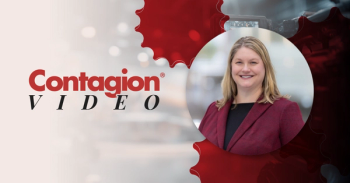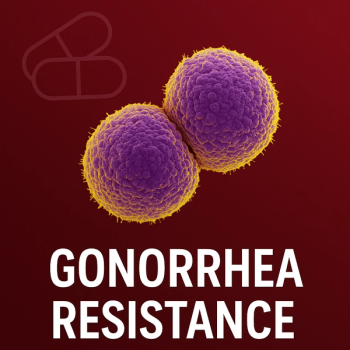A JAMA Pediatrics cross-sectional study using CDC state-level data from 2011–2023 found that states fully repealing nonmedical school vaccine exemptions, California (2015), New York (2019), Maine (2019), and Connecticut (2021), saw kindergarten vaccination rates rise by about 2 to 4 percentage points compared with states that retained such policies. The analysis included approximately 2.8 million kindergarteners in public and private schools and used a staggered difference-in-differences design.
Within three years of total repeal, overall exemption rates fell by 3.2 percentage points (95% CI, 1.9–4.4). Compared with nonrepeal states, vaccination rates increased by 4.1 percentage points (95% CI, 3.3–4.9) for DTaP, 2.8 points (95% CI, 2.1–3.5) for hepatitis B, 4 points (95% CI, 3.1–4.9) for MMR, and 3.8 points (95% CI, 2.9–4.6) for polio. Medical exemptions rose only 0.4 percentage points (95% CI, .04–.7), suggesting minimal substitution.
By contrast, partial repeals in Vermont and Washington were associated with smaller, less persistent gains. Overall, the authors conclude that total repeal of nonmedical exemptions was associated with higher kindergarten vaccination coverage and helped maintain immunization rates during a period of heightened vaccine hesitancy.
The study showing higher kindergarten vaccination rates in states that repealed nonmedical school-entry exemptions should be read as a clear warning for policymakers considering the opposite approach, according to pediatric infectious disease specialist James “Jim” Conway, MD, from the department of pediatrics, University of Wisconsin School of Medicine and Public Health.
Conway, who has spent two to three decades working to expand vaccine access, says the data reinforce that tightening school-entry policies does not simply drive families toward fraudulent medical exemptions. Instead, it appears to reset expectations about what is normal and acceptable for school communities. He is focused around the idea of getting better access for preventive care globally to children, and to populations across the entire age spectrum.
What You Need to Know
States that fully repealed nonmedical exemptions saw 2-4 percentage point increases in DTaP, hepatitis B, MMR, and polio coverage, with only a .4 percentage point rise in medical exemptions.
James Conway, MD, warns that when school-level coverage dips below 90%. and local pockets fall to 50-60%, communities become “an outbreak waiting to happen.”
He stresses that vaccination is still the norm (9 in 10 families vaccinate) and that weakening mandates undermines both community protection and the ability to keep schools safely open.
Why Removing Nonmedical Exemptions Raises Coverage
In an interview with Contagion, Conway said this makes sense when you consider how flexible nonmedical exemptions have historically been. “When you look at medical exemptions, you know, every state has those. A fair number of states have religious exemptions. But these personal conviction waivers that have been out there are really variable as far as both how they're interpreted and how they're enforced,” he explained.
“There was a paper some years ago in the New England Journal that looked at states that made it easy to take an exemption versus states that made it more difficult. Some states required people to have a medical provider sign off on the waiver… Other states made it that you had to be notarized… And then some of them make it really easy where you just print off a PDF and sign it.”
Once those nonmedical options are removed, parents effectively face 3 choices: seek a legitimate medical exemption, seek a religious exemption where available, or vaccinate.
“When you remove that non medical exemption and basically tell people that they can't just opt out of vaccines without a reason, it does, I think at some level make it clearer that both the medical system and the school systems and the state's legislatures that dictate those rules really do believe that immunizations are important for the well-being of communities and of schools,” Conway said.
He added that the process of explaining why nonmedical exemptions are removed also matters. “When people have had to explain why they're removing the non-medical exemptions, you know, the reasoning is that we've now seen what it does to schools when disease outbreaks happen in those settings,” he said.
Unvaccinated students may be excluded from school for “three or four weeks” during quarantine periods. “It also sometimes means that entire school systems or schools have to shut down when there's large outbreaks,” he noted.
Another brake on inappropriate exemptions is provider behavior. “You can't just declare a medical exemption in most of these states. You actually have to have a medical provider essentially vouch for the fact that your kid has some sort of medical reason why they can't get these vaccines,” Conway said. “I think providers are more and more cautious about doing things that would be considered fraudulent.”
Put together, he said, stricter rules “make it not as easy to get an exemption” and “make it a little bit clearer why these school entry requirements are important.” According to the JAMA Pediatrics paper, that is exactly what appears to be happening, with more families ultimately agreeing to proceed with vaccination.
From Coverage Slippage to Outbreaks
The United States is already facing sustained measles transmission across dozens of states. Declines in kindergarten coverage for measles, mumps, and rubella (MMR) and other routine vaccines can be the difference between isolated cases and explosive outbreaks, Conway warned.
“When people think about immunization coverage, there's a couple sort of, I wouldn't say magical numbers, but important numbers that we look at,” he said. “Typically when you introduce a new vaccine or as you're getting rolling with a new program, you try to achieve about an 80% immunization coverage rate ultimately with the goal of at least getting up to 90% or higher if possible.”
The gap between 90% and 80% coverage is not just 10 percentage points; it represents “a 100% increase in the number of vulnerable people in your community,” he said. “When you have 90% of the population immunized, that means only one in 10 people are susceptible… When you go down to 80%, it's only one in five people are suddenly vulnerable to the disease.”
He illustrated the difference with a simple scenario. “Somebody walks into a room with 20 people… if only two of them are… not been vaccinated, the odds are pretty small that that person with the illness is going to come into contact with that person,” he said. “Same scenario… instead it's one in five people are not immunized. Now you got four people out of 20 who are vulnerable… and it's pretty likely that they're going to come into contact with one of those people.”
“As we predicted and hoped would happen,” he added, “we saw with this paper that you reference that we in fact do have many more people then agreeing to proceed with getting vaccinated in the states where they've been able to remove these non-medical exemptions.” Those averages also mask local clustering.
“Rarely are these things equally distributed across the state,” Conway said. “There's going to be some school systems or some communities or neighborhoods where you may see places that we have in Wisconsin here where some areas of the state, only 50 or 60% of the kids are vaccinated against some of these diseases. So you have these pockets of vulnerability.”
“All it takes then is one person with one of these highly contagious diseases like measles showing up and getting into one of those communities and boom, you've got an outbreak happening,” he said. Diseases like measles and mumps have long incubation periods and people can be contagious before symptoms. “Once an outbreak gets started, it's really hard to shut it down,” Conway said, because of presymptomatic transmission and the challenge of retracing exposures over weeks.
Talking With Families: “The Norm Is To Be Vaccinated”
Conway pushed back on the idea that vaccine skepticism is now mainstream,“The perception is that it's more mainstream, but in fact it actually still does represent the minority and actually still does represent a fringe opinion,” he said. “If I'm talking about… the fact that… we're worried about the fact that we're getting… just below 90% immunization coverage in many areas of the country. That means that 9 out of 10 families actually do believe that vaccines are really important.”
“What you're seeing is that the perception is different because the hesitant families and the hesitant people are very, very loud, especially on social media,” he said. “There's this perception that it's more mainstream when in fact the behavior is actually still very, very much a fringe behavior.”
He believes clinicians and school nurses need to be explicit about this, “One of the things that clinicians and school nurses and others need to do is do a better job of talking about that it is the norm to be vaccinated, that most families do decide to vaccinate,” Conway said. “Most families decide that they do want to protect their kid from diseases that could disable or kill them.”
“These are not benign diseases. We don't immunize for these just for fun,” he added. “I guarantee you any kid that has ever had one of these diseases, if you ask them… would you have wanted that prevented, 100% of them are going to tell you absolutely they would do anything they possibly could did not have had that particular disease.”
He urged clinicians to emphasize both individual and community protection, especially for people who cannot be vaccinated or may not respond because of immune-compromising conditions or medications. “They do depend on the rest of the community, the rest of society being protected so that they aren't at risk of being exposed to these diseases,” he said.
Conway also distinguished between hesitancy and hardline opposition, “We've discovered that hesitancy is not by any means the same as anti-vaccination activities or what are called anti-vaxxers. That's even a smaller group of people that are completely… opposed to vaccines,” he said. “Really, it's a larger group of people that are now more comfortable that they have questions, they're hesitant, they want answers to their questions.”
“I think we all need to do a better job of making sure that they're getting reliable answers… and that we're encouraging them to talk to their own providers who they hopefully have a relationship with and have trust,” Conway said.
Policy Backlash: Risk of “Outbreaks Waiting To Happen”
Several states have recently debated weakening school vaccine mandates or removing them altogether. Conway warned that such policy shifts risk taking communities “back to a different era.”
“I think they're really potentially risking taking us back to a different era where… these diseases circulated more widely, where people had to be put into isolation and quarantine… sometimes for long periods of time,” he said. “They're on the risk of… potentially during larger outbreaks, getting to the point of needing to actually close schools for periods of time.”
He noted that loosening requirements also undermines basic situational awareness, “If you don't have a school entry requirement, there's no way that then the school nurses can even collect data and even know how many people are or aren't vaccinated within a particular school,” Conway said. “As soon as you have a couple of cases… you have no idea whether you're sitting in a place where you've got 90% of people immunized or whether you've got 40% of people immunized.” Without that data, he said, schools may have to “assume the worst anytime there's a couple of cases” and “likely move into a place where they close those schools or have to do the things that are more drastic.”
Bottom Line: Vaccines Are Safe, Effective, and Held to a Higher Standard
As states weigh vaccine policies, Conway believes the core message for families should remain simple, “I just think people need to remember that vaccines are safe and effective. Those are really the two things you care about with any pharmaceutical product. Are they safe and do they work to do what they're designed to do?” he said.
“Vaccines are and always have been held to a much higher standard than drugs,” he added, pointing to larger trial populations and longer development timelines. “Vaccines are studied in 10s of thousands, if not hundreds of thousands of people… typically vaccines take somewhere between 3 and 10 years of development.”
“If we do get over 90% immunization coverage in most areas… that's when you start talking about actually being able to eradicate diseases,” he said, citing smallpox, one type of polio, and prior progress toward measles elimination.
“Vaccines are safe, vaccines are effective, Vaccines are really important, both for individual health and for community health,” Conway concluded. “If we keep reminding people of that and keep directing them to ask their questions to trusted medical people within their communities, hopefully we'll get back to a place of trust… that'll hopefully get these outbreaks that we've been living through to settle down as soon as possible.”
Reference
Bald A, Gold S, Yang YT. State Repeal of Nonmedical Vaccine Exemptions and Kindergarten Vaccination Rates. JAMA Pediatr. Published online October 27, 2025. Accessed Novermber 17, 2025. doi:10.1001/jamapediatrics.2025.4185





























































































































































































































































































